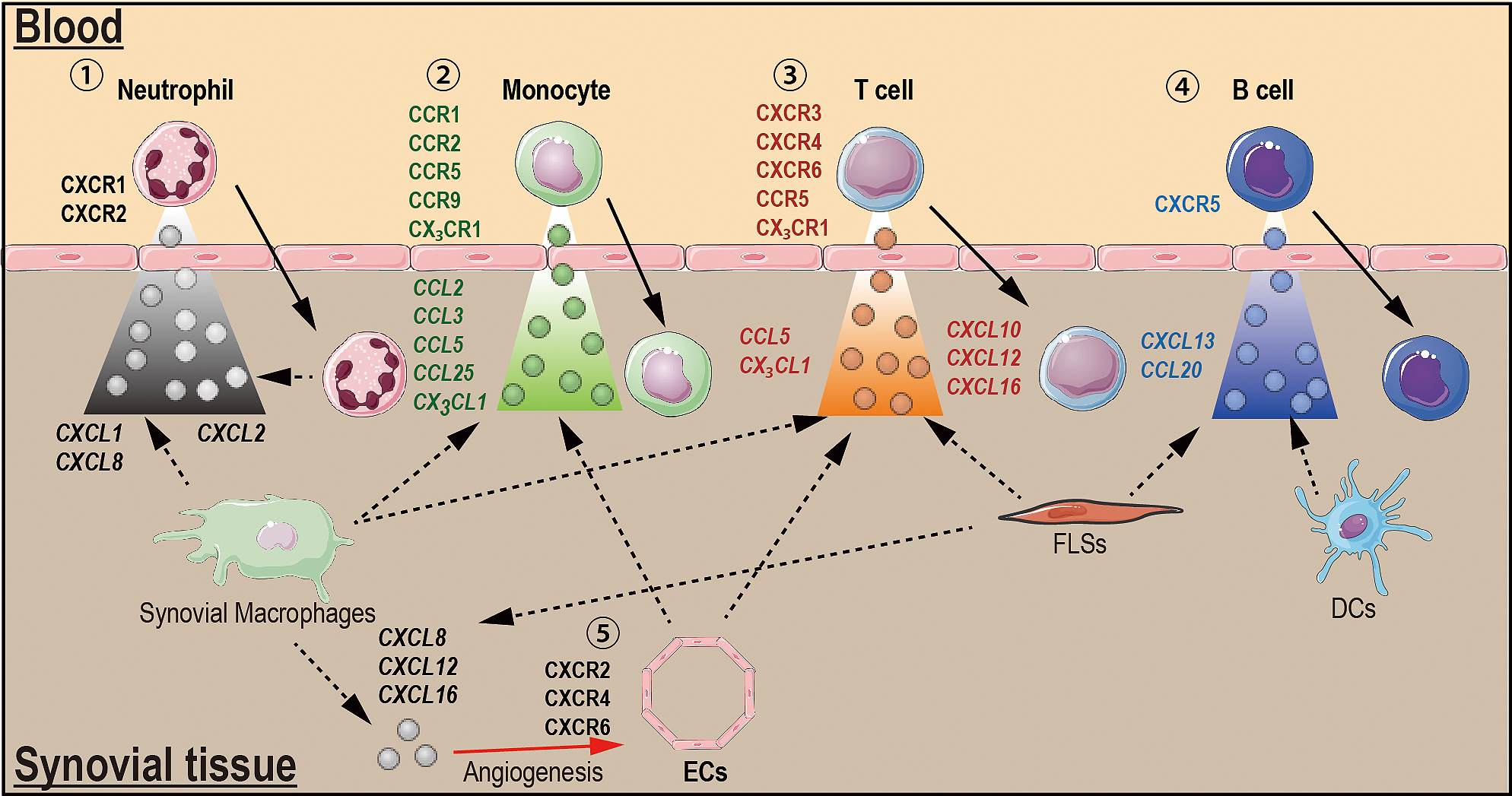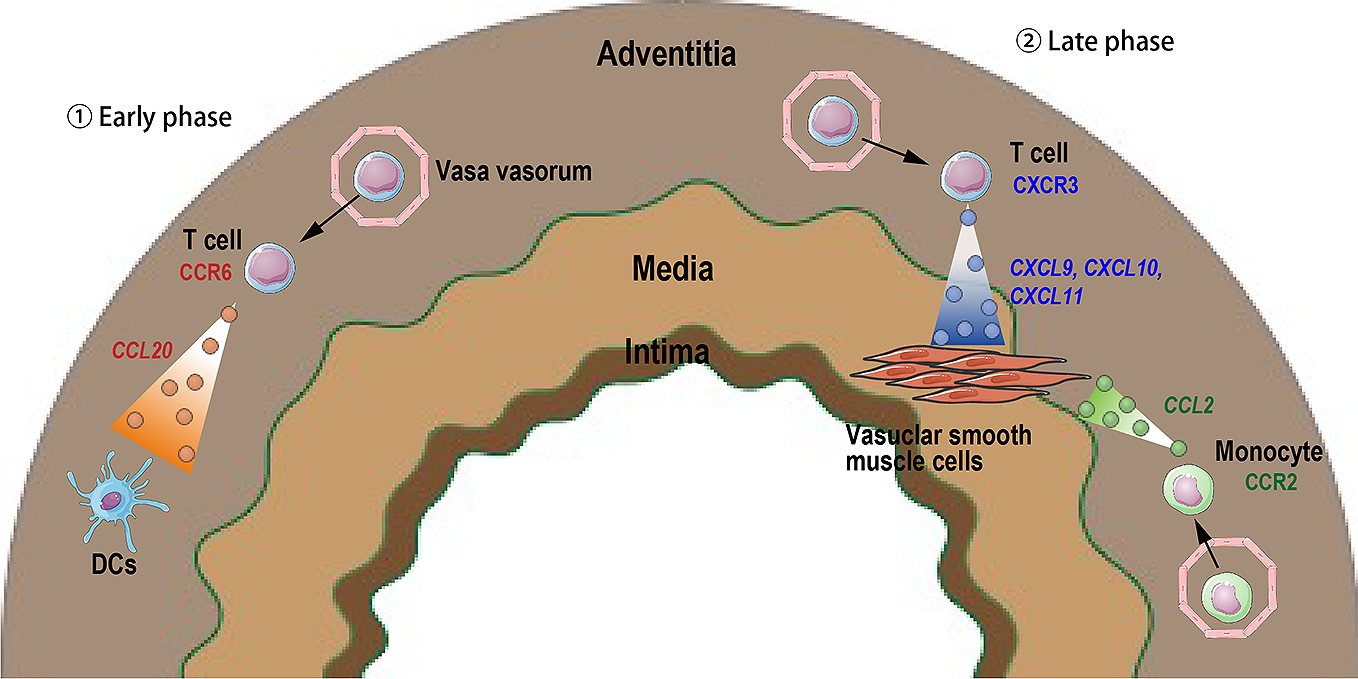Figure 1. Chemokines and chemokine receptors in rheumatoid arthritis.
①Neutrophil recruitment: Synovial macrophages generate CXCL1 and CXCL8, which promote neutrophil recruitment into the joint. Once neutrophils enter into the joint, they become activated and produce CXCL2, which amplifies neutrophil recruitment and stimulates additional chemokine production by macrophages. ②Monocyte recruitment: Synovial macrophages generate chemokines that promote monocyte recruitment through CCR2, CCR5, CCR9 and CX3CR1. ③T cell recruitment: Synovial macrophages, endothelial cells (ECs) and fibroblast-like synovial cells (FLSs) generate chemokines that induce T cell trafficking through CXCR3, CXCR4, CXCR6, CCR5 and CXCR1. ④B cell recruitment; FLSs and dendritic cells (DCs) produce CXCL13 and CCL20 that promote B cell recruitment through CXCR5. ⑤Angiogenesis: CXCL8, CXCL12 and CXCL16 produced by synovial macrophage and FLSs induce angiogenesis through CXCR2, CXCR4, and CXCR6, respectively, expressed on ECs. Solid arrows depict cell movement in response to chemokines, and dashed arrows indicate chemokine secretion from cell. The red solid arrow indicates chemokine-inducing angiogenesis.
From: Targeting the Chemokine System in Rheumatoid Arthritis and Vasculitis

Figure 2. Chemokines and chemokine receptors in giant cell arteritis.
①Early phase: Tissue-resident dendritic cells (DCs) in adventitia produce CCL20 that promotes CCR6+ T cell infiltration. ②Late phase: Vascular smooth muscle cells in media produce CXCL9, CXCL10 and CXCL11, which attract CXCR3+ T cells. Vascular smooth muscle cells also produce CCL2 resulting in CCR2+ monocyte recruitment. Solid arrows depict cell movement in response to chemokines, and dashed arrows indicate chemokine secretion from a cell.
From: Targeting the Chemokine System in Rheumatoid Arthritis and Vasculitis


